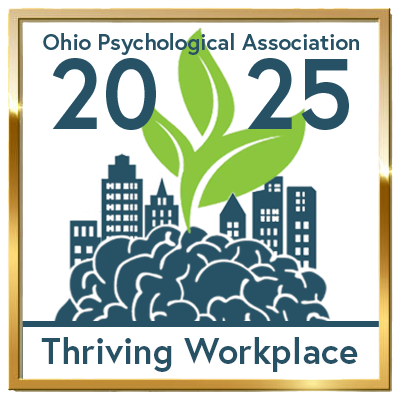COLLEGE EXPERIENCE
The beginning of each new semester brought me feelings of stress and anxiety. I have been a working student since I was 15-years-old. Working and going to school wasn’t going to change when entering college. Whether it was serving food at a nursing home, organizing clothes in retail or selling the newest electronics, jobs became a package deal with my college experience. During my junior year, I was working 40 hours a week on top of a 15 credit hour course schedule. Turns out I am in good company: according to a Georgetown University report, roughly 40 percent of undergraduates work at least 30 hours per week while attending school.

The financial responsibility to always afford new textbooks and pay towards tuition added a large amount of stress to my life. I dreaded looking over a professor’s syllabus only to see the class required a $200 textbook. I often took out loans and applied to scholarships to keep up with fees but those only apply to tuition. Typically I was still on the hook for necessities like food, gas, housing and textbooks.
When I first began my college career, I questioned how I could make friends or attend campus events while working and completing homework. Many times I felt like I was doing college the wrong way. Well-meaning academic advisers would tell me to work less and focus on school more. They showed a lack of understanding for the working learner. Often I would see friends going to parties on social media and feel alone or left out. At the end of each semester, I would be filled with a sense of foreboding because I wasn’t sure if I could keep attending college.

YOU AREN'T ALONE
According to the Stress in America report by the American Psychological Association (October 2018, p.5) "Money and work consistently top the list of stressors for adults overall, and both are common stressors for Gen Z as well. More than 8 in 10 (81 percent) of Gen Zs between the ages of 18 and 21 report money as a source of significant stress, with nearly as many (77 percent) saying the same about work."
Often times I would feel frustrated, get headaches and my heart would beat faster when thinking about the list of projects, exams and the number of hours I needed to work during the week. Sometimes I would avoid all my responsibilities because I felt a lack of control. I started to feel like I would never finish my degree no matter how hard I worked. These are often symptoms of anxiety or stress. Each symptom can be experienced with differing degrees of intensity.
- Physical effects of anxiety – trembling or shaking, headaches, sweating, pounding heart or accelerated heart rate, chest pain, chills or heat sensations, nausea or abdominal distress
- Cognitive symptoms of anxiety – racing thoughts, difficulty controlling feelings of worry, mind going blank, difficulty organizing thoughts
- Physical effects of stress – grinding teeth, neck or back pain, sweating, dry mouth, stomach pain
- Cognitive symptoms of stress – poor judgment, seeing only the negative, inability to concentrate
HOW TO CONQUER WORKING WHILE IN COLLEGE
Splitting my attention between the demands of a job and a college education was an experience I learned to balance over time. Today, work experience has become an asset that a student carries with them as they enter the full-time job market. Over the past four years I have learned that working a job and attending college requires motivation and dedication to keep moving forward. At this time, I have successfully balanced a full-time job and earned a bachelor’s degree in applied communications and a minor in public relations. Here are a few tips that help me manage my stress and anxiety.
Sleep and Rest
Getting a good night’s sleep can make all the difference amidst your day to day responsibilities. Brains need sleep to help consolidate all of the information they've taken in during the day. Also, during sleep that information gets organized and transferred to long term memory so that it can be retrieved later when it is needed. Sleep is vital for our bodies to heal cuts or bruises and to fight off illness and infection. I usually go to bed and wake up at the same time every-day. Lack of sleep makes it harder for me to be productive and present. Getting a solid 7 to 8 hours every night allows me to focus on daily tasks. During the day, I schedule 1-3 hours of my time to decompress by reading a book or watching a movie.
Prioritize Organization
Utilize your calendar, set phone reminders and keep a planner. I use all of the above to stay on top of work, school and my social life. It’s impossible to remember everything, so I help myself out by writing everything down. On extremely busy days I divide up my tasks by the hour, making it easier to manage my life. In addition, I lay out my clothes and pack my lunch the evening before. This allows my future self to start the day off strong.
Ask for help
When struggling academically, I learned that reaching out to a tutor or going to a study lab is an invaluable tool. Instead of wasting time struggling over material I didn’t understand, I asked for help. After using these on-campus resources, I began to understand the concepts and materials from class. When struggling emotionally, I went to the on-campus guidance counselor to talk about effective ways for me to deal with my constant worrying and anxiety. During that time, I felt secure in the safe space of the counselor's office. I left the counseling sessions feeling like a weight had been lifted off my shoulders. I started off my final semester of college optimistically.
Celebrate small victories
Graduating college and earning a degree is a huge accomplishment, but it’s equally important to focus on the string of small victories. I like to celebrate turning a paper in on time, getting an ‘A’ on a test or pushing through a rough week. It feels good to pat myself on the back after completing another task on my list. Typically I like to celebrate my victories by eating ice-cream, going bowling or taking an entire day off from homework. When I set the bar too high on my expectations and don’t meet them, I feel disappointed in myself. I’ve realized that celebrating those small wins throughout the month make me feel confident and accomplished.
Remember the long term goals
When I would have an extremely stressful week, I reminded myself that this lifestyle isn’t going to last forever. I consistently told myself that one day I would look back at all my sacrifices and remember how hard I worked to achieve a goal. Putting life into a bigger perspective helped me push through each week. I’ve learned if you don’t have a destination in mind, choosing a path is not important. Setting long term goals is the best way to ensure that you’ll get where you need to go.
RECENT POSTS












